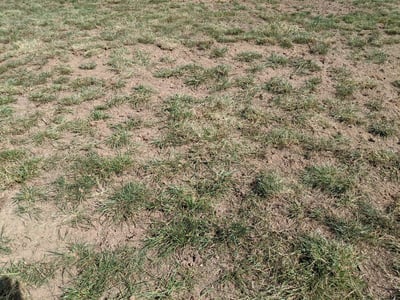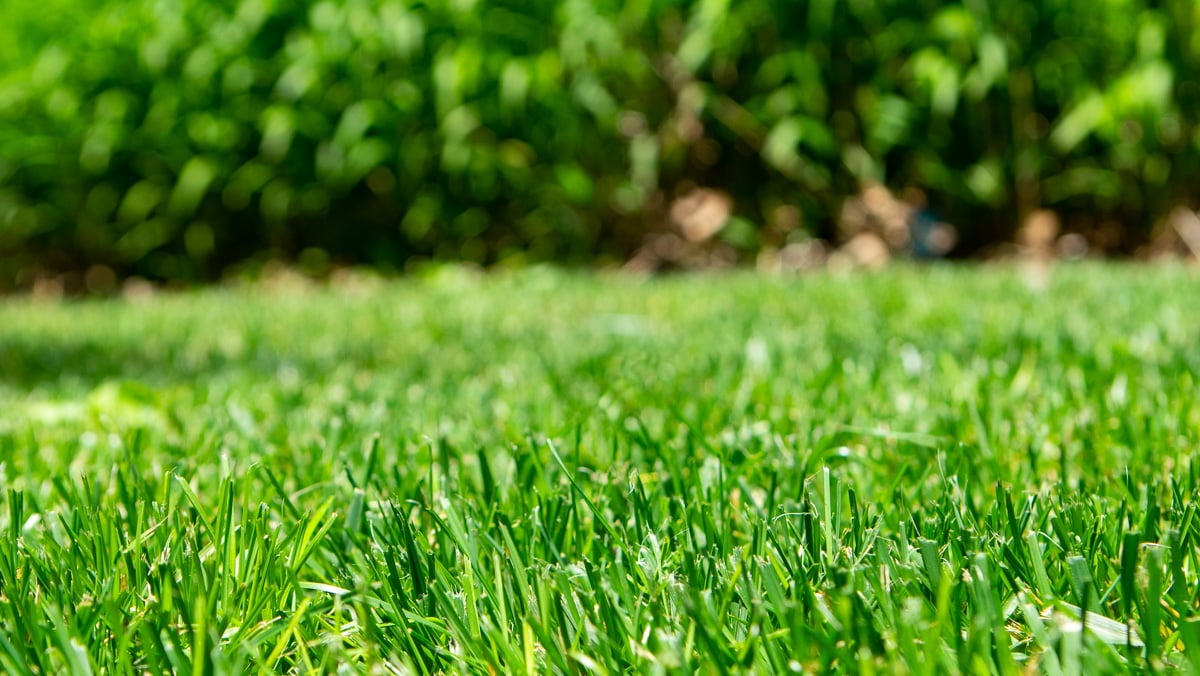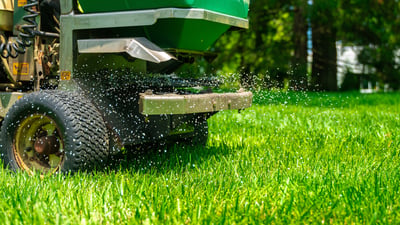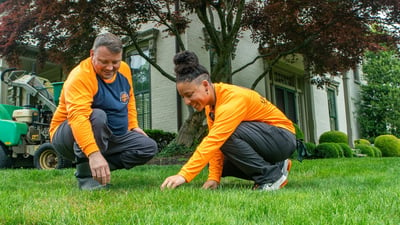


If your lawn has turned brown, you're probably wondering: Is my grass dead—or just dormant? And more importantly, can you bring it back?
This is a common concern during hot or dry weather, when grass starts to lose its green color and homeowners begin to worry. Before jumping into treatments or seeding, it’s important to know what’s actually happening beneath the surface.
In this article, we’ll explain how to tell if your lawn is truly dead, what might have caused it, and what steps you can take to get it back to life.
One of the first steps in reviving a brown lawn is figuring out whether your grass is truly dead or just dormant. The difference matters — because one can recover naturally, and the other needs to be replaced.

Grass often enters a dormant state during periods of drought or extreme heat. This is a natural survival mechanism where the grass turns brown and stops growing to conserve resources. Unfortunately, dormant grass and dead grass can look nearly identical.
If your lawn has turned brown suddenly during hot, dry conditions — and it happened across the entire yard — there’s a good chance it’s simply dormant and will bounce back when the weather improves.
But if your lawn’s condition hasn’t improved over time, or there are signs of patchy death rather than uniform browning, it may be a more serious issue.
It’s not always easy to tell whether your lawn is truly dead or just stressed. But there are a few simple ways to figure it out.
One quick way to check is to grab a small handful of grass and give it a gentle tug. If the grass pulls out easily with little resistance, it likely means the roots have died and the lawn is no longer viable in that area. But if the grass stays firmly rooted, it may just be dormant grass waiting for better conditions to bounce back.
Take a step back and assess whether the browning is uniform or patchy. If the entire lawn is brown but still feels firm underfoot, it’s probably gone dormant. But if the brown spots are limited to specific areas, it could point to localized issues — like pests, disease, pet damage, or excessive foot traffic — that may have actually killed the grass in those spots.
If you’ve had a period of drought, give the lawn a deep watering and wait several days. Dormant grass should show signs of recovery — greening up slightly and starting to grow again. Dead grass, on the other hand, will remain brown and brittle no matter how much water it gets.
Before you can fix a dead or dying lawn, you need to understand what caused the problem in the first place. Brown grass can result from several different issues — and not all of them mean your lawn is truly dead.

Here are some of the most common causes of a brown or patchy lawn:
Trying to diagnose the problem on your own can be frustrating — and guessing wrong could make it worse. That’s why working with a lawn care professional can make all the difference. They’ll help you pinpoint the exact cause and recommend the right solution for your specific situation.
If your grass is simply dormant, there’s good news — it will usually recover on its own once temperatures cool down and rainfall returns. You may start to see green blades reappear and new growth begin as the grass comes out of its protective state.
But what if your lawn is truly dead?
Unfortunately, dead grass can’t be revived. Once the roots have died, no amount of watering or fertilizing will bring it back. In those cases, you’ll need to take steps to restore the affected areas — often through reseeding or renovation services.
The key is knowing what caused the problem in the first place. If pests, disease, or environmental stressors are still present, simply planting new grass won’t fix the underlying issue. That’s why a proper diagnosis is critical before starting any restoration work.
If you’ve confirmed that your lawn (or large sections of it) are truly dead, the next step is to restore it — but only after addressing the root cause of the problem.
Before planting new grass, it’s essential to understand why the lawn died in the first place. If disease, pests, or soil issues are still present, new grass will likely struggle too. You don’t want to invest in repair efforts only to see the same issues resurface.
This is where working with a lawn care professional is incredibly valuable. A trained technician can assess your lawn, identify what went wrong, and recommend the best path forward. Once the issue is resolved, you can move forward with reseeding or other renovation methods.
The right approach depends on your lawn’s condition, but in many cases, power seeding is one of the most effective ways to reestablish healthy grass.
If your lawn needs a fresh start, power seeding is one of the most effective ways to bring it back.
Unlike simply scattering grass seed over the surface (a method called overseeding), power seeding involves using specialized equipment to cut rows into the soil and plant seed directly into it. This method dramatically improves seed-to-soil contact, which is essential for strong germination and healthy new growth.

Here’s why power seeding is ideal for restoring dead grass:
If your lawn has suffered from drought, pests, or disease — and large areas are beyond recovery — power seeding gives you a reliable way to start over with a thick, healthy lawn.
Seeing your lawn turn brown — whether in patches or all over — can be frustrating. It’s natural to want answers fast and a fix even faster. But with so many possible causes behind a dead or dying lawn, it can be hard to know where to start.
That’s where a local lawn care professional can help.
At Limbwalker, we know how to diagnose lawn problems accurately and recommend the best solution based on your lawn’s specific needs. Whether your grass is suffering from drought stress, disease, pests, or simply old age, we’ll create a plan to bring your yard back to life.
And if your lawn has reached the point of no return, we can help you start fresh with a power seeding program tailored to your property.
Your lawn should be something you’re proud of — not something that causes stress or frustration. Whether you’re dealing with brown patches, widespread dead grass, or just don’t know what’s going on, you deserve clear answers and lasting solutions.
At Limbwalker, we love solving lawn problems. Our team is here to help you figure out what’s causing issues and how to fix them — whether it’s a minor patch or a full-lawn restoration.
We use the same science-backed lawn care techniques on our own properties, and we’re proud to bring that expertise to yours. From professional diagnosis to power seeding and beyond, we’ll create a plan to give you a thick, healthy lawn you can enjoy again.
Ready to bring your lawn back to life? Request your quote today and ask about adding power seeding to your lawn care program.



